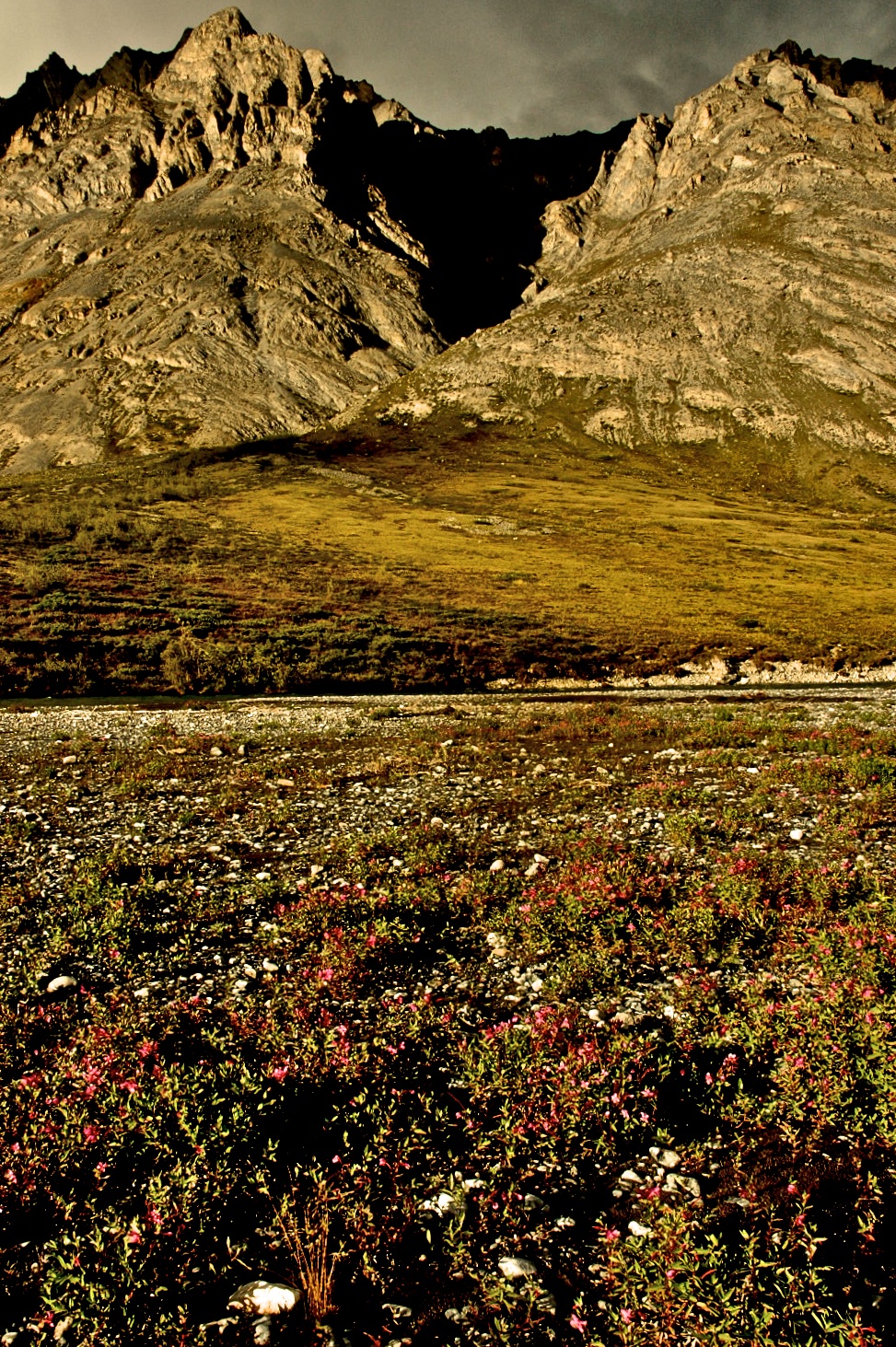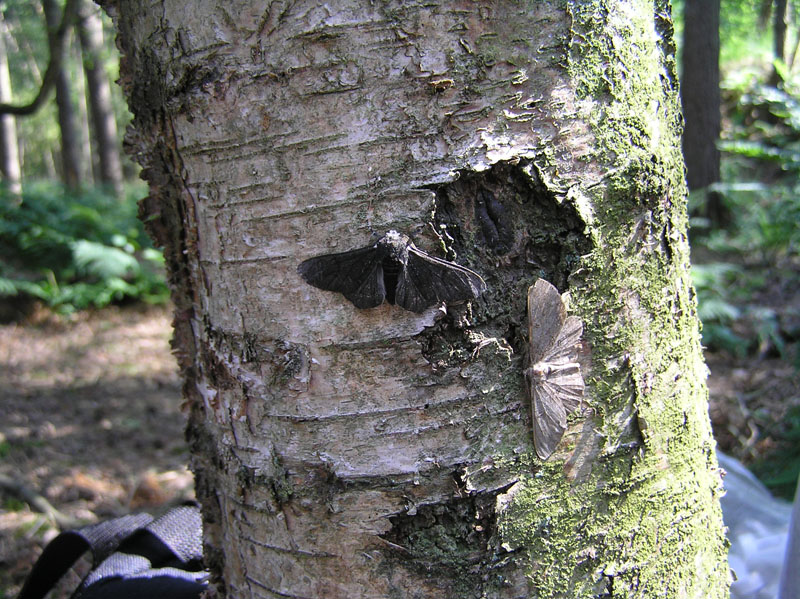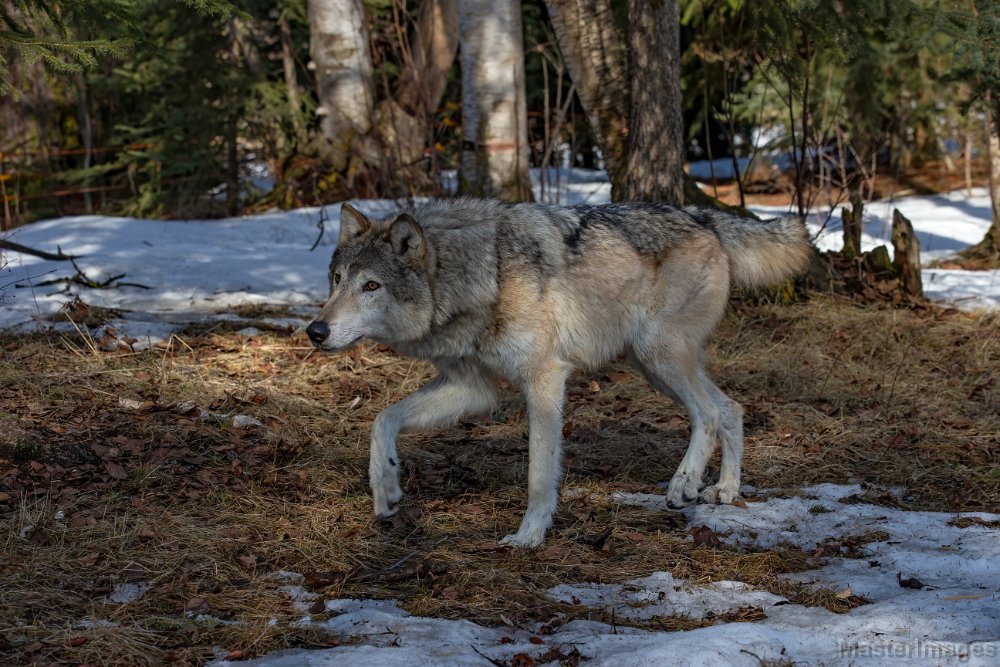Rewilding for Evolution: A Revitalized Approach
The homepage of The Rewilding Institute (TRI) prominently features a striking quote from founder Dave Foreman’s essay “Wild Things for Their Own Sake”: “The most needed and holy work of conservation is to keep whole the building blocks of evolution. Such is the true work of conservation, the goal of those who cannot live without wild things.”
We agree that evolution must be central to the motivation and moral framework behind rewilding, and we are encouraged to see TRI’s apparent re-emphasis on the topic given this choice of quotation. At the same time, however, the notion of rewilding for the sake of evolution must be further refined and elaborated if it is to provide insight or guidance.
Evolution Is Good (But Then What?)
Michael Soulé laid the groundwork for views like Foreman’s in his much-cited article “What is Conservation Biology?” (1985) in which he included “evolution is good” as one of four “normative postulates” shared by nearly all conservationists. Soulé seemed to find this postulate self-evident: “Assuming that life itself is good, how can one maintain an ethical neutrality about evolution? Life itself owes its existence and present diversity to the evolutionary process.” We fully agree. However, Soulé added little about what this postulate entails practically, apart from an “ethical imperative to provide for the continuation of evolutionary processes in as many undisturbed natural habitats as possible” (ibid).

Dwarf Fireweed on Marsh Fork and jagged peaks, Canning River, Arctic National Wildlife Refuge, AK © Dave Foreman
Foreman similarly asserted in his book Rewilding North America that “Nature reserves have to protect entire ecosystems, guarding the flow and dance of evolution. We have finally learned that wilderness is the arena of evolution” (p. 114). His choice of phrase deliberately invoked Leopold, who wrote in his essay “Wilderness” that “Only those able to see the pageant of evolution can be expected to value its theater, the wilderness.” Foreman referred to the same Leopold passage in “Wild Things for Their Own Sake” (see above) adding that we must “step back somewhere (many somewheres) so evolution is free to unfold for wild things in its own unhobbled, eerie way” and “keep whole the building blocks of evolution along with the sweeping landscapes such as Arctic National Wildlife Refuge where that unforeseeable, unfathomable wonderwork can play out unhindered.” Foreman did not specify what he took the “building blocks of evolution” to be in that essay. However, in Rewilding Earth Podcast Episode 1, he identified them as “native species, natural processes, large chunks of land and oceans and lakes and rivers that are off limits to industrial civilization.”
Such rhetoric from Leopold, Soulé, and Foreman is likely to appeal to advocates of rewilding and wilderness preservation, and we agree with the spirit behind it as well as the general conclusions. However, it is unsatisfyingly superficial. In addition to the vagueness of their practical prescriptions, the passages above share one glaring oversight: evolution per se does not require wilderness, native species, or undisturbed natural habitats. Invasive species can evolve in cities, after all, and it is reasonable to assume that evolutionary processes would continue on a planet completely dominated by humans. The imminent threat is not that evolution will stop, but that it will lose its autonomy – its role reduced to engineering species that are more successful at surviving and reproducing in the thrall of manmade environments and anthropogenic pressures. Evolution does not need saving; it needs liberating.
Keeping Evolution Wild
Any introductory biology textbook will define evolution something like this: evolution is the change in the heritable characteristics of a population over successive generations. The basic “building block” of evolution is genetic variation within a population of organisms. It doesn’t matter whether those organisms are native or non-native, wild or domestic; as long as there is genetic variability between them, they will be subject to evolutionary processes.
Moreover, the selection pressures that drive evolution needn’t be “natural” for evolution to occur. Darwin himself was influenced by artificial selection in formulating his theory of descent with modification. Indeed, the domestication and subsequent selective breeding of plants and animals was a type of evolution in which the selection pressures included the desires, preferences, and intentional actions of human beings. Today’s textbook examples of observable evolution still tend to involve anthropogenic selection pressures. The use of antibiotics has resulted in the evolution of antibiotic-resistant bacteria, and the use of insecticides has prompted the evolution of insecticide-resistant insects. The black-colored variant of the Peppered Moth (Biston betularia) was rare in wild nature, and black moths presumably would have remained rare if the pollution of coal factories hadn’t tainted England’s trees with soot. In this classic example of evolution in action, anthropogenic air pollution provided the environmental change that caused dark coloration to be advantageous for survival and reproduction, by making it the case that dark-colored moths were better hidden from the birds that predated upon them.

Typica and carbonaria morphs on the same tree. The light-coloured typica (below the bark’s scar) is nearly invisible on this pollution-free tree, camouflaging it from predators. (By Martinowksy, CC BY-SA 3.0)
More recently, biologist Menno Schilthuizen has described urban environments as “pressure cookers of evolution” in his popular book Darwin Comes to Town (2018). Urban evolutionary biology is becoming a burgeoning field of study and the topic of an academic book recently published by Oxford University Press. Meanwhile, extensive human harvesting of fish has been recognized as a selection pressure that favors the survival of fish that breed earlier and reach a smaller adult body size. Anthropogenic climate change is becoming an important global selection pressure, such as by favoring the survival of animals with body sizes and shapes that are more advantageous in warmer environments. Not content with the natural pace of such evolutionary changes, some scientists have proposed interventionist strategies with names like assisted evolution, prescriptive evolution, and assisted gene flow, whereby biotechnology is used to artificially accelerate evolutionary processes with the goal of helping species adapt and survive in the face of climate change and other anthropogenic pressures.
There is little doubt that humanity has become a global force of evolution. However, we maintain that this de facto domination by our species does not justify concession to ongoing human management of nature, nor should it cause us to abandon the aspiration to protect wilderness. We abjure interventionist strategies intended to help non-human species adapt and evolve in an anthropized world, where this state of the world is accepted as inevitable. Instead, we firmly agree with Foreman and Soulé that there is a moral imperative to “step back somewhere (many somewheres)” and allow the continuation of evolutionary processes specifically in “as many undisturbed natural habitats as possible.” At the same time, however, we realize that we would be prey to easy counterexamples if we were to pretend that the rationale is to “save evolution.” We acknowledge that evolution can and does occur in thoroughly anthropized environments like farms, cities, and hospitals. What worries us is the prospect that humanity could leave no places on Earth where wild nature is left free to dictate the course of future evolution. No single species should claim the power to determine evolution’s winners. Non-human species should not be forced to adapt to human-derived habitats or die.
Space for Speciation
To ensure space for unfettered evolution, it is essential to create protected areas at a scale large enough to permit the speciation of all types of organisms to occur naturally. This is an empirical issue, and indeed the topic of earlier work by Soulé (“Thresholds for Survival: Maintaining Fitness and Evolutionary Potential”): “All that is necessary is to determine the size of the smallest island on which a particular taxon has speciated autochthonously (in situ) – that is, where there is sufficient room for a species to split into two or more species. For example, the occurrence of endemic genera and families of lemurs, chameleons, birds, and plants on Madagascar is evidence that these taxa have speciated on that island” (p. 164).
More recent research has found evidence of the speciation of large mammals in islands of a smaller size, but it has meanwhile concluded that speciation of other types of animals, such as bats, has never occurred in land masses smaller than Madagascar. If we adopt the area of Madagascar (over 58 million hectares) as a lower limit for the natural speciation of the full range of non-human taxa, then it is clear that our existing protected area systems are woefully inadequate. At present, there is only one protected terrestrial area larger in size than Madagascar, and it is hardly representative of Earth’s terrestrial biomes: the North-East Greenland National Park.
It is the goal of our current and ongoing work to further articulate this position and defend it from its numerous adversaries. Our first article on the theme, serving as a prelude to the project, was “Unfettered Evolution: A Cornerstone of Wildness” (June 2023) in which we launched our call for a revitalized strategy for conservation and rewilding based on strict non-intervention, at scales large enough for significant global populations of non-human species to remain subject to natural evolutionary processes. We further emphasized that restoring unfettered evolution requires not only removing human-created selection pressures wherever possible but also ensuring the perpetuation of all natural selection pressures, including predation.
Against Taxon Substitution
We will close by mentioning, by way of contrast, one more ostensible antecedent to our position in the North American rewilding tradition: in 1999, Connie Barlow contributed an article to Wild Earth, “Rewilding for Evolution,” in which she attempted to elevate evolution to its proper place as a core rationale for rewilding. Unfortunately, although her goal was laudable, Barlow steered the article into a non sequitur. She began with the claim that it is wrong to permit human activity to influence a lineage’s “evolutionary futures,” correctly noting that “whatever each of us may feel about the propriety of intentional genetic manipulation conducted in laboratories, such pales next to the reality of the evolutionary consequences that our species is forcing upon life everywhere outside the scientist’s lab” (p. 54). We agree.
At the end of the article, however, Barlow proceeded to argue in favor of the use of “ecological proxies” from other continents, such as elephants, as surrogates for North America’s extinct late Pleistocene megafauna. We do not assent to this conclusion, nor do we believe that it follows from Barlow’s own premises: when we move a species to a geographical region outside of its ancestral range, can that be construed as anything other than human influence on the “evolutionary futures” of both that species and the others in the ecosystem into which this non-native species is introduced? Moreover, there is doubt whether Asian elephants, a species proposed for Pleistocene rewilding, would thrive in the climate of North American landscapes, or even whether the loss of megafauna in North America was due to human agency. In our view, “rewilding for evolution” should in fact preclude the use of surrogate species or taxon substitutes. Wild nature itself has no need for human-introduced taxon substitutes. Given time, natural evolutionary processes will create their own solutions to fill vacant ecological niches, through the process of adaptive radiation. Indeed, it is likely that convergent evolution, where distinct lineages independently evolve similar traits under similar natural selective pressures, would eventually produce “taxon substitutes” of nature’s own choice.

Nature’s own solution to fill open niches after the extinction of the non-avian dinosaurs. [Wolf (Canis lupus) © Larry Master, masterimages.org]
It may be useful, in this context, to differentiate between two questions that are relevant to our position: “What conditions are needed for future evolution and speciation to be able to occur as a result of natural processes?” and “What (if any) interventions are warranted before we step back and allow evolution to unfold on its own?” The basic answer to the former question, as we broached above, is that we need very large areas of land and sea that are protected under a commitment to strict non-intervention. This commitment to future non-intervention, however, should not imply that interventions such as habitat restoration or species reintroductions are never appropriate prior to stepping back and letting evolution be. On the contrary, restoration can be warranted – but only when its purpose is to restore evolution’s own past choices, such as by removing manmade structures or pollutants, eradicating invasive species, or reintroducing native species that were extirpated by humans.
Correspondingly, we believe that there is no morally permissible reason to deliberately create unnatural ecosystems – such as those containing non-native taxon substitutes – even if they are subsequently left alone “so evolution is free to unfold” (as Foreman put it). We are reminded of what Michael Soulé wrote about this in Wild Earth, as he saw that maintaining or restoring ecological processes by use of surrogate species (“weedy species”) could not be justified, as it was not the same as putting back the native community (see “Are Ecosystem Processes Enough?”). Similarly, Foreman was later to write: “Without native species, the land is domesticated or feral, not wild, that a land without native species is not a wilderness, but a wasteland” (Rewilding North America, p. 125). Barlow, presumably, wanted evolution to unfold freely in North American wildlands, but she wanted it to happen with elephants: “If we ourselves do not bring elephants back and offer them a second chance for an evolving, deepening citizenship, then Order Proboscidea will never again produce American endemics” (p. 56). She ignored the fact that the translocation of non-native species is itself gratuitous human interference with the course of evolution.
Foreman concluded “Wild Things for Their Own Sake” by asserting: “We need to bring evolution back to the fore as the highest good to be shielded by conservation.” This is our goal as well. However, it is imperative to be more precise in articulating the demand – given that conservation of evolutionary potential has been invoked to justify practices from high-tech “assisted evolution” to translocations of non-native species. It is not merely evolution that rewilding must preserve, but wild nature’s authority over the process.




I generally agree. Two comments here:
1. I think that we know that the megafauna extinctions in North America were caused by humans, because they took place at about time that humans arrived here. I don’t see how we would ever know this to an absolute certainty, but I think we can be reasonably sure that humans caused these extinctions.
2. What about cloning remains of extinct native species and reintroducing them? I don’t think that this is scientifically possible quite yet, but it could be in the near future.
I cannot access Michael Soules article – if you have it could you email it to me? Thanks, Margot Lowe